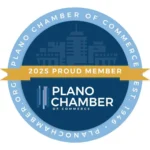Did you know that businesses that prioritize effective client communication & relationship management are 60% more likely to retain their clients long-term? Imagine building strong relationships with your clients, where trust and satisfaction are the foundation. Good communication is the key to unlocking this success.
In this blog, we’ll explore how mastering client communication & relationship management can enhance your business progress, the strategies you can use to improve these interactions, and the tools that make managing client expectations easier.
Stay with us to discover practical tips that will help you build and maintain lasting client connections.
The Importance of Client Communication & Relationship Management in Business
Why do some businesses seem to have clients who stick with them for years, while others constantly chase new customers? It all comes down to the strength of their client relationships.
Building Trust & Loyalty:
Strong client relationships are the bedrock of trust. When clients feel valued and understood, they are more likely to remain loyal. A real-life example is Apple, which has cultivated a loyal customer base by consistently delivering products that meet their customers’ needs. This loyalty translates into repeat business and customer referrals, driving long-term success.
Statistical Reference:
Did you know it costs 5 to 25 times more to acquire a new customer than to retain an existing one? According to Harvard Business Review, retaining customers is not only cost-effective but also essential for sustainable business growth. Keeping a customer means saving on marketing and sales costs while ensuring a steady revenue stream.
Impact on Revenue & Growth:
Satisfied clients are more likely to refer others and provide repeat business, which directly impacts revenue. For instance, according to Bain & Company, increasing customer retention rates by just 5% can boost profits by 25% to 95%. This growth is not only financially significant but also builds a strong brand reputation.
Real-Life Example:
Take Amazon, for example. By prioritizing customer satisfaction and building strong client relationships, Amazon has grown to become a global leader in e-commerce. Their focus on customer feedback, personalized experiences, and efficient service has driven their revenue and market dominance.
3 Key Elements of Effective Client Communication & Relationship Management

Why do some client relationships thrive while others falter? The secret often lies in the quality of communication.
1. Active Listening:
Listening is more than just hearing; it’s about fully understanding your client’s needs and concerns. Active listening involves paying full attention, asking clarifying questions, and reflecting on what the client says.
- Avoid interrupting while the client is speaking.
- Summarize what they’ve said to confirm understanding.
Research Reference:
Studies consistently show that active listening significantly impacts client satisfaction. According to research published in the Journal of Personal Selling & Sales Management, clients who feel listened to are more likely to be satisfied and remain loyal. The study found that companies that prioritize active listening can improve client retention rates by up to 20%.
2. Clear & Transparent Communication:
Avoiding jargon and being transparent is crucial to effective communication. Clients appreciate when complex information is broken down into simple, easy-to-understand language. This not only prevents misunderstandings but also builds trust, as clients feel they are being treated with respect and honesty.
3. Consistency in Communication:
Regular updates and follow-ups are key to maintaining client trust. Consistent client communication & relationship management show that you are reliable and committed to their needs. For example, sending regular progress reports, even if there is no major update, keeps the client informed and reassures them that their project is being handled with care.
Practical Tips:
- Regular Check-ins: Schedule routine check-ins with your clients to discuss ongoing projects and address any concerns. This helps to identify potential issues early and fosters a collaborative environment.
- Personalized Messages: Tailor your communication to each client’s preferences and needs. This could mean using their preferred communication channel (e.g., email, phone, or messaging apps) or addressing them by name in updates.
- Follow-up Reminders: After meetings or major updates, send follow-up emails summarizing what was discussed and outlining the next steps. This reinforces the information and ensures everyone is on the same page.
Tools for Managing Client Interactions
Effective client interaction management is crucial for building strong relationships and ensuring smooth communication. Have you ever wondered what tools can help streamline this process?
Client Relationship Management (CRM) Software
CRM software is essential for managing client interactions, tracking communications, and maintaining organized client data. Tools like Salesforce and HubSpot offer features such as lead tracking, automated follow-ups, and detailed analytics. According to studies, CRM software can increase sales by up to 29% by improving client communication & relationship management.
Popular CRM Tools:
- Salesforce: Known for its powerful customization options and scalability.
- HubSpot: User-friendly with built-in marketing tools.
- Zoho CRM: Cost-effective with robust automation features.
Project Management Tools
Keeping client projects on track is vital, and project management tools like Trello and Asana help you do just that. These tools allow you to assign tasks, set deadlines, and monitor progress, ensuring that client expectations are met without delays.
- Trello: Ideal for visual project tracking with boards and cards.
- Asana: Great for managing complex projects with multiple tasks and dependencies.
- Basecamp: Simple and effective for small teams needing easy collaboration.
Communication Platforms
Reliable communication platforms are the backbone of effective client communication & relationship management. Tools like Slack and Zoom provide real-time communication, whether through instant messaging or video calls, ensuring that you can stay connected with clients at all times.
- Slack: Excellent for organized team communication with channels and direct messaging.
- Zoom: Leading video conferencing tool, perfect for virtual meetings and webinars.
- Microsoft Teams: Integrated with Office 365, ideal for businesses already using Microsoft products.
Enhancing Client Relationships Through Effective Communication
Personalization:
Personalized communication is key to making clients feel valued and understood. When you tailor your messages to individual clients, it shows that you care about their specific needs and preferences. Personalized emails can boost click-through rates by 14% and conversion rates by 10%.
Proactive Problem Solving:
Addressing potential issues before they escalate is a powerful way to build trust. For instance, a company that regularly anticipates client needs and resolves issues early creates a strong bond of reliability with its clients. For example, Amazon is known for its proactive customer service, often resolving issues before customers even realize there’s a problem.
Feedback & Continuous Improvement:
Seeking and acting on client feedback is crucial for maintaining and improving client communication & relationship management. Companies like Apple regularly use client feedback to refine their products and services, ensuring they meet customer expectations and stay ahead in the market.
By integrating these strategies—personalized communication, proactive problem-solving, and continuous improvement through feedback—you can significantly enhance client relationships, leading to long-term success and client loyalty.
Challenges in Client Communication & Relationship Management

Effective client communication is not just about resolving issues but also about building trust and ensuring long-term success. Here check the challenges you might face;
Managing Expectations:
One of the toughest aspects of client communication is aligning what the client expects with what the business can realistically deliver. Clients often have high hopes, and when these aren’t met, it can lead to disappointment. To manage this, it’s essential to set clear, realistic expectations from the start. Regularly update clients on progress, and be transparent about any potential issues or delays.
Handling Difficult Conversations:
Conflict is inevitable in any business relationship, whether it’s due to misunderstandings, unmet expectations, or unforeseen problems. Handling these conversations with professionalism and empathy is crucial. Prepare for difficult conversations by listening actively, acknowledging the client’s concerns, and working collaboratively to find a resolution. According to a study by the Project Management Institute, effective conflict resolution can improve client retention rates by up to 20%.
Solution – Setting Realistic Expectations:
To avoid misaligned expectations, establish clear communication from the beginning. This includes discussing timelines, budgets, and deliverables. Use written agreements to outline the scope of work and any contingencies. Regular check-ins can help ensure that both parties remain on the same page.
Best Practices for Long-Term Client Relationship Management
1. Continuous Engagement:
Maintaining regular client communication & relationship management, even after a project concludes, is vital for fostering long-term relationships. It’s not enough to deliver a project and move on; clients need to feel valued and supported continuously. Regular check-ins, newsletters, and personalized updates keep your business top of mind and show clients that you care about their ongoing success. Did you know that companies that actively engage with clients can increase client retention rates by up to 25%?
2. Loyalty Programs:
Implementing a loyalty program is a strategic way to enhance client communication & relationship management. These programs reward clients for their continued partnership, offering incentives like discounts, exclusive access to services, or special offers. For instance, Starbucks’ rewards program significantly boosted client retention, leading to a 5% increase in overall sales. By recognizing and rewarding client loyalty, businesses can strengthen relationships and secure long-term commitment.
Example – Starbucks Loyalty Program:
Starbucks is a prime example of a successful loyalty program that has dramatically impacted client retention. The program allows customers to earn points (Stars) with every purchase, which can be redeemed for free items. This not only increases customer visits but also fosters a sense of belonging and appreciation among its users. The program’s success is evident in its financial outcomes; Starbucks has reported that its loyalty program members accounted for 40% of their total sales in 2020.
3. Maintaining Relationships:
Relationships don’t end when a project does. Instead, that’s when the opportunity to build a lasting partnership begins. Stay in touch with clients, celebrate their milestones, and continue offering value through content like industry insights or tips.
This continuous relationship-building approach helps convert one-time clients into long-term partners who are more likely to refer your services to others. According to research by Bain & Company, a 5% increase in client retention can lead to a 25% to 95% increase in profits.
4. Proactive Communication:
Engaging clients proactively rather than reactively is key. Reach out with useful information before they ask for it. This approach not only helps in solving potential issues early but also builds trust and demonstrates your commitment to their success.
Regular surveys or feedback forms on client communication & relationship management can also help you stay ahead of any dissatisfaction, ensuring that your clients feel heard and valued.
In Conclusion
In conclusion, effective client communication & relationship management are vital for business success. By actively engaging with clients, building trust, and using the right tools, businesses can significantly improve client satisfaction and retention. Implementing the strategies discussed in this blog will not only enhance your client relationships but also contribute to long-term growth and profitability.
To take your client relationships to the next level, consider reaching out to LUCI Financial Solutions. Our experts are here to provide personalized advice and strategies to help you succeed. Contact us today for more information!











